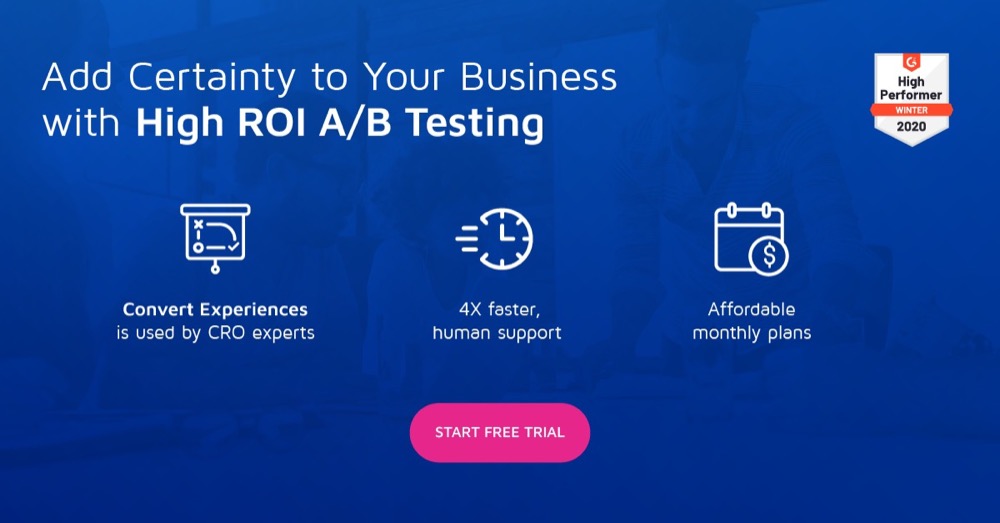Online user behavior has changed. Consumer behavior is in a state of flux as people adapt to a world remarkably different from the one they are accustomed to. In March, Google reported that searchers’ immediate needs were accessing government instructions and shop closure information, food, short-term jobs and financial relief. A month later, another Google report shows that searchers are shifting the focus to mobile usage and continuing education, government help programs, digital banking and financial apps.
This constant change in online behavior may cause website user engagement to fluctuate. The pandemic has affected user behavior with some industries like ecommerce seeing an uptick in traffic while others, like tourism, experiencing the opposite. But more traffic doesn’t necessarily mean higher website engagement. Visitors could come to your website in droves and bounce away without engaging much with your content.
One reason visitors may be engaging less with your website is the lack of genuinely helpful content. If your website metrics are showing low engagement, here is how you can increase website engagement:
While it’s no secret that ecommerce websites are experiencing a surge in traffic, this increase has not been an industry-wide phenomenon. Ecommerce businesses selling essential items are enjoying a traffic surge as consumers buy groceries, food, masks, medicines, puzzles, home workout equipment, etc. Others are not so lucky.
Francis Teo of Blue Lambda puts it best:
Having products relevant to the COVID-19 pandemic is important. Think about what products might apply to the consumer who is stuck at home during lockdown? Those businesses that pivot quickly to provide the relevant products to the consumers will thrive.
Some ecommerce sites selling adjacent products may find it easier to pivot than others. Regardless of where you stand on the ecommerce traffic surge table, here is how you can increase website engagement on your site:
Essential Products
With increased traffic, it can be tempting to rest on your oars and take what you can get. But you could miss out on first time online shoppers who may find your ecommerce site difficult to navigate. Chinese ecommerce giant Alibaba reports that sales from consumers born in the 1960s quadrupled this year. And US shoppers aged 45+ are turning to online shopping to stay safe during this pandemic.
Your site’s architecture and navigation may not be intuitive to new online shoppers. Dive into Google Analytics to see where users are dropping off. User flow reports are an excellent way to visualize navigation paths your visitors take within your website. Pinpoint pages where visitors bounce off the most and deploy Hotjar or any other heatmap tool of your choice. Record sessions and use the heatmap feature to identify elements of your page that frustrates visitors.
Once you identify the issue, create a new experiment in Convert Experiences with your variation spotting the fix. Should your variation beat the original at the end of the experiment, ship it via personalization using our tool as a quick deploy CMS if you are pressed for time. For example, new online shoppers may not understand why they need to sign-up to order from your site or why you need their credit card information. Analyzing your funnel and fixing issues you identify will make things easier for them.
Another way you can increase website engagement is to analyze your product pages and find the best-selling products on your website during this crisis. Create a “most popular products” category and place it on your homepage. Chances are if these products are already popular with consumers, other visitors to your site may also be looking for the same products. Having this category on your homepage makes it easy for new and anxious veteran online shoppers to access what they need without having to navigate pages deep. If you already have this section, update it as user behavior has changed remarkably since this pandemic started. Whether you’re creating this section anew or updating it, one thing you can do is to test the placement to see which works the best. Design variations in Convert Experiences and run an experiment to see which placement works best for your visitors.
A third action you can take on your ecommerce site is to mine your search bar and customer support requests for information. More often than not, these two media yield direct insights into what pain points your site visitors are facing. And you can easily solve them to make life a lot easier.
Non-essential Products
While sales may be down right now, it is not the end of the world. Shopify reports that on its platform, retailers selling apparel and accessories experienced a dip in Gross Merchandise Value (GMV) in mid-March but started recovering at the end of March which continued into April.
You might not be making sales right now but that doesn’t mean you can’t provide value to your customers. You can still help your customers feeling the effects of the current crisis with content that helps them and gives them confidence.
Joris Bryon, CEO of Dexter Agency, has expert advice on what you can do:
For companies selling products that are not considered essential during this pandemic, the best thing to do is to help their customers and grow their list from the extra traffic they may have right now. I’d recommend trying out different lead magnets – try to be relevant for your target group, given the current situation. For instance, if you sell cycling products in a country where people are not allowed to go for a bike ride (like Spain, Italy or France), you may see a drop in conversions. However, a lead magnet ‘5 types of training for cycling you can do without your bike’ is very relevant and helpful to this target group. It can have great sign-up rates. If you then send a nurture series with great, relevant content, you’ll be in pole position once they decide to buy.
You can run content experiments to see what changes you can make to website content to improve readability, time spent on page and help people find the information they’re looking for. Dive into Convert Experiences to test different pages on your website. Another great alternative is running email marketing experiments if you lack the numbers to run a proper A/B test.
Medical Information Websites
As hospitals become the frontier walls in the defense against Sar-Cov-2, people are turning to online sources to get information. And medical information websites are at the fore of where they go.
As doctors scramble to set up telemedicine services, many people are relying on medical information sites to fill this obvious gap. This trend has seen traffic to sites in this industry rise. For example, Google Trends shows that interest in the keyword “WebMD Coronavirus” has spiked as more web users turn to the popular medical information publisher, WebMD for information on the current pandemic:
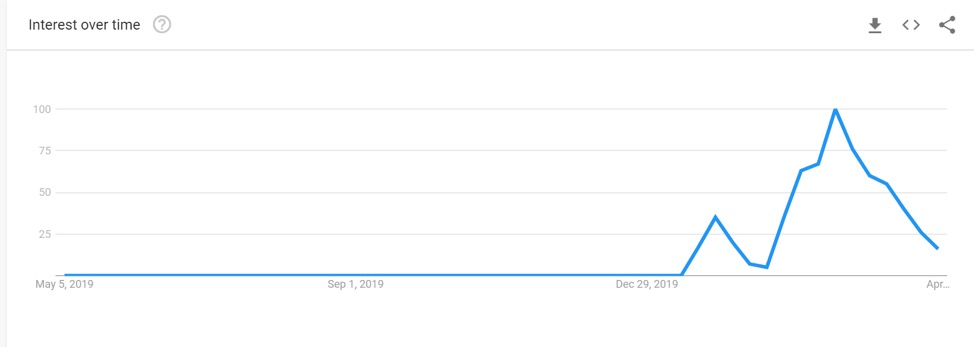
With many people relying on your medical information website, making information is accurate and easy to understand should be a priority. Should you include a map with stats so visitors can track deaths, infection rates, hospitalizations, etc. on your coronavirus page? Should you only have articles on your dedicated coronavirus page? What about a mix of the two?
Analyze your target audience and see which format they respond to best. Use content experiments of only articles, articles + an incidence map and an incidence map alone to gauge your audience’s response. A simple A/B test should tell you what your audience prefers. Also, A/B test article formats to see how best to present information to “snackers” and in-depth readers.
A last note, do not forget to share positive news about the current situation to give your readers hope and uplift their spirits.
SaaS Companies
SaaS companies from every sphere are dealing with customers worried about budgets and saving money in the face of the looming recession. How do you retain these customers and keep them engaged when they visit your website?
Even with content changes on your website, the worry about budgets and what to do with subscription is real. Do you let customers cancel their subscriptions en masse?. Take a page from our book here at Convert and give your customers the option to pause subscriptions, especially now.
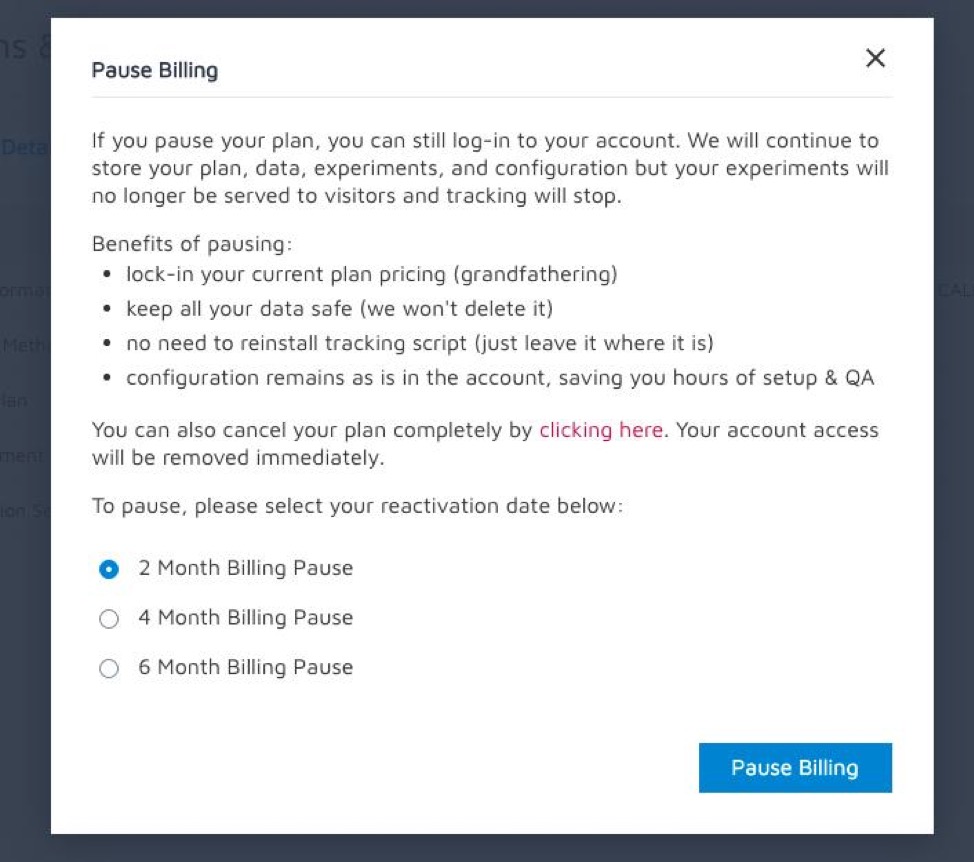
Many of your customers know the value of your business. Heck, your content does an outstanding job of reminding customers how valuable your services are. Without the option to come back and reevaluate their subscription with you, many customers will cancel as anxiety about money is high. By giving customers the option to pause subscriptions for a while, you are taking away one source of anxiety and providing respite. And the best part, you can absolutely run an experiment to see if adding a “pause billing” button to your cancellation page will reduce cancelations. Pauses enable you to retain customers, which is hard right now.
Still on easing financial anxiety, it may be time to open the Fort Knot that is your pricing page. Transparent pricing is more important than ever as customers look towards downgrading plans or moving to an alternative provider to save money. Having pricing transparent and accessible will make it easier for customers to make better decisions and choose the right plans for their companies. It will also make conversions easier. A Convert certified agency, iProspect, helped a customer with a gated pricing page increase conversions by 15{1652eb1ffa4184925f6a63a9c04ea6b421acb7a78117241e7d4325cdca8339fa} by being transparent about pricing. The transparent pricing pages beat the gated version. Follow their example and test transparent pricing that gives customers the information they need to make informed choices.
Tourism
The tourism industry has been one of the hardest hit by the coronavirus pandemic. One would expect that traffic to tourism based websites to have dropped. But the reverse is the case. While customers can no longer travel, stay in hotels and enjoy visiting new places, they are moving their vacation plans to next year according to Google Trends.
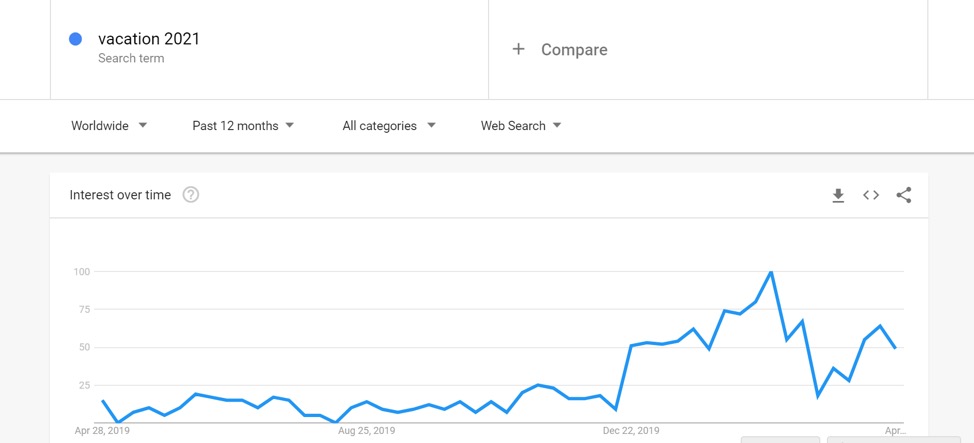
Another recent lockdown trend is an increased interest in virtual tours.

Because consumer behavior has changed, visitors to your travel related website will not be searching for the same things they used to. To keep them engaged and coming back, you need to make it a priority to give them the information they need. Google Trends can point you in the right direction. Looking at what visitors search for on your website will tell you the information you need to include in your content. Run experiments on your new content based on insights you gathered to see how engaged they keep your visitors.
Restaurants
Lockdowns have forced many restaurants to close totally or operate at vastly reduced capacity. And with dine-in options out of the question, restaurants need to look for new ways to reach customers who still want their favorite foods.
In the past, restaurants with an online presence relied on keywords like “restaurants near me” to attract customers online. But with the pandemic, these terms are trending down as people stay home. People are moving to using terms like “curbside pickups”:
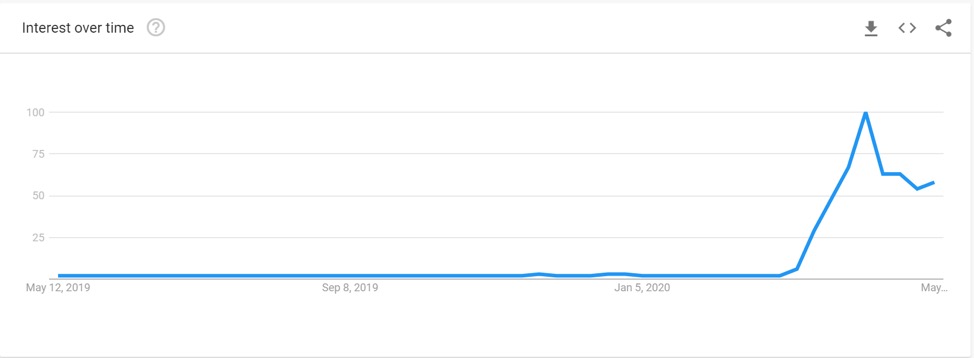
And food delivery options via platforms like Grubhub, Postmates, UberEats, etc.
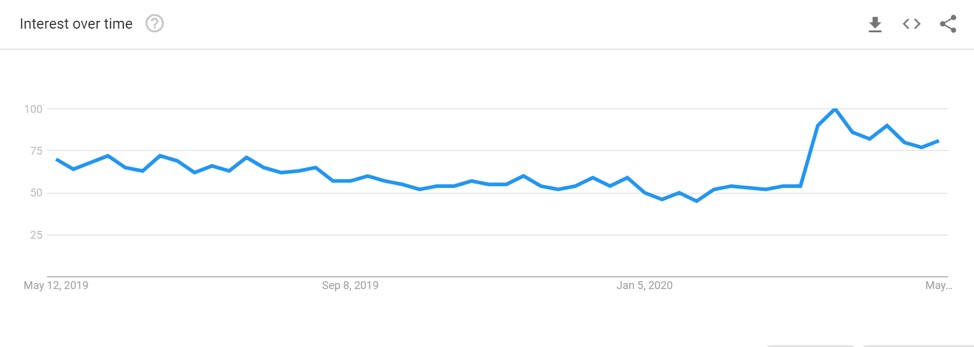
Now more than ever, it is important for restaurants to be online so customers can have access to their favorite food. Restaurants can leverage their online presence to promote curbside pickup, delivery options and menus during the lockdowns. Online presence doesn’t always have to be a website. A Facebook or Instagram page or even a Google My Business page will do.
Another way restaurants can get online is by signing up for food delivery services like UberEats, Zomato, Postmates and others. These platforms already have customers ordering food online which restaurants can serve.
Conclusion
With more people spending time at home right now, keeping them engaged is more important than ever. The only way to accomplish this is to acknowledge their changing needs, provide them the right information given the circumstances and give them confidence that things will change.

